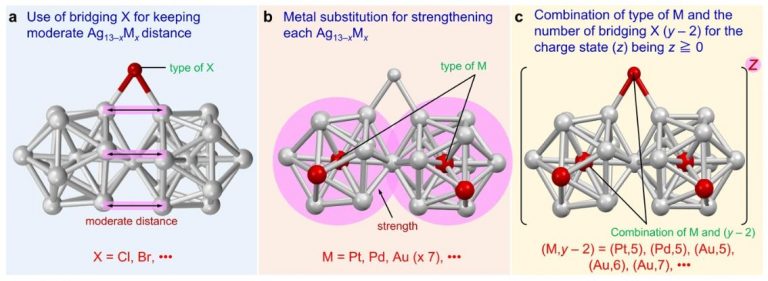New Study Reveals Design Clues for Silver-based Superatomic Molecules
Joint press release by Tokyo University of Science and Hokkaido University.
Researchers from Japan explore the key factors responsible for the synthesis of materials composed of silver-based superatoms
Superatomic molecules containing noble metal elements like gold and silver are studied for their potential in the synthesis of superatomic materials. However, the understanding of silver-based superatomic molecules has been limited. Addressing this gap, researchers from Japan studied two bimetallic superatomic molecules with silver as a main constituent to determine the key factors that enabled their formation. Their findings are expected to advance the development of novel materials in the future.

In the past few decades, metal nanoclusters composed of noble metal elements such as gold (Au) and silver (Ag) have gained attention as superatoms for the synthesis of materials with unique properties and potential new applications. These superatoms (also known as “artificial atoms”) typically consist of a cluster of a few to several hundred atoms and exhibit properties that are significantly different from their bulk, conventional counterparts. However, much like real atoms, the stability of these superatoms is determined by the formation of a closed-shell electron structure.
Ag-based superatoms are known for their superior properties and functions, including photoluminescence and selective catalytic activity, compared to those of Au-based superatoms. However, most of the research in this field has been primarily focused on Au-based superatomic molecules.
To overcome this research gap, researchers from Japan studied the formation of superatomic molecules composed of Ag and evaluated the factors involved in this formation. This study was led by Professor Yuichi Negishi from Tokyo University of Science (TUS) with contributions from Dr. Sakiat Hossain from TUS, and Professor Tetsuya Taketsugu and Assistant Professor Takeshi Iwasa from Hokkaido University, and was published in the journal Communications Chemistry on 28 March 2023.
The original press release from Tokyo University of Science can be found here, and can also be downloaded as a PDF.
Media contact
Hiroshi Matsuda
Public Relations Division
Tokyo University of Science
Email: mediaoffice[at]admin.tus.ac.jp
Website: https://www.tus.ac.jp/en/mediarelations/
Sohail Keegan Pinto
Public Relations & Communications Division
Office of Public Relations and Social Collaboration
Hokkaido University
Email: en-press[at]general.hokudai.ac.jp
